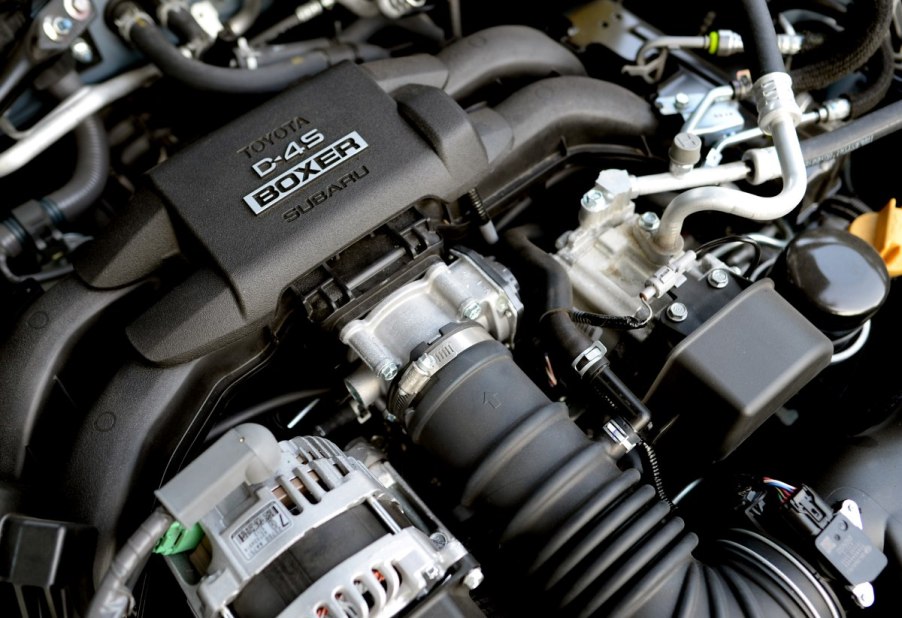
Why Do Subaru Engines Blow Up So Much?
With a reputation for safety and dependability, Subaru has climbed to the top of the food chain in the past decade. But it wasn’t long ago that Subaru engines were blowing up so often that the brand redesigned its 2.5-liter engine five times in ten years. Understanding why Subaru engines blow up so often and how to prevent it can make your older Subaru less of a headache.

What causes Subaru engines to blow?
The Subaru engine is a unique setup when compared to most cars on the road. Rather than an inline or V-shaped engine configuration, the Subaru uses a Boxer setup. Instead of arranging the pistons vertically, a Subaru engine’s pistons are laid out horizontally. Furthermore, they are horizontally opposed, where the crankshaft is in the center and the pistons push outward on either side.
As such, there are two head gaskets in a four-cylinder Boxer engine, as opposed to one in an inline-four arrangement like you’d find in a Toyota Corolla. That doubles the chance for failure by nature. However, Subaru’s engine problems aren’t just about how many parts are involved.
The issue stems from the construction of both the cylinder walls and the head gaskets themselves.
Why Subaru 2.5 engines are unreliable
Before 1996, Subaru utilized a 2.2-liter four-cylinder Boxer engine that was incredibly reliable, especially for the time. However, the company took that same block and bored the cylinders to 2.5 liters to make more power. That bump in displacement delivered performance but caused a host of problems as a result.
Because the cylinders were simply bored to a larger diameter, the cylinder walls were now thinner. That, of course, weakened the entire structure, allowing the cylinders to deform under heavy load. That, in itself, is fairly normal – even the most reliable engines do this to some extent.
But depending on the design of the 2.5-liter Subaru engine, they can be weak enough to cause problems. While the cylinder deformation isn’t so much to damage the engine itself, it can cause wear to the head gasket and mating surface.
This, in essence, is what allows coolant to enter the combustion chamber. At that point, the Subaru engine is blown and needs immediate attention. However, it’s not the only issue that leads to so many Subaru engine failures.
Get a Subaru head gasket upgrade to improve reliability
Recognizing that the original composite head gaskets were a problem, Subaru went to work. Starting in 1996, it utilized a multi-layer steel head gasket for added durability. In addition, it coated the new gasket in graphite to further reduce the chance for damage.
Unfortunately though, this graphite film caused yet another problem. Instead of increasing durability, friction from vibrating cylinder walls would wear away at the film. This would, again, cause a coolant leak and damage to the engine. Since then, both Subaru and a range of aftermarket manufacturers began development of another, more reliable gasket starting in 2005.
Electrical problems causing corrosion
In addition to the physical wear causing 2.5-liter Subaru engines to blow up, electrical issues cause problems as well. Problems with the charging system caused an unusually high pH level in the coolant. This caused a corrosive condition that ate away at the new steel gaskets. In turn, Subaru introduced a pair of changes between 2000 and 2003 to remedy the problem.
In 2000, it added a coolant conditioner to help balance the pH and reduce risk of corrosion. And by 2003, Subaru introduced additional electrical grounds to reduce the effect on the coolant system.
Can you prevent blowing your Subaru engine?
With such a unique set of circumstances, it is difficult to entirely prevent this Subaru blown engine problem. However, buying quality gaskets and closely following the cooling system maintenance can help. Overall though, AWD Auto says that any Subaru from before 2005 is a risky bet, as you don’t know what the previous owner has done for maintenance.
If you’re in the market for one of these older Subies, a pre-purchase inspection is your best friend. Have the technician perform a compression test to ensure all of the gaskets are holding strong. In addition, testing the cooling system can help indicate any potential problems with high-pH coolant. Together, these factors can help make owning and older Subaru an easier proposition.




